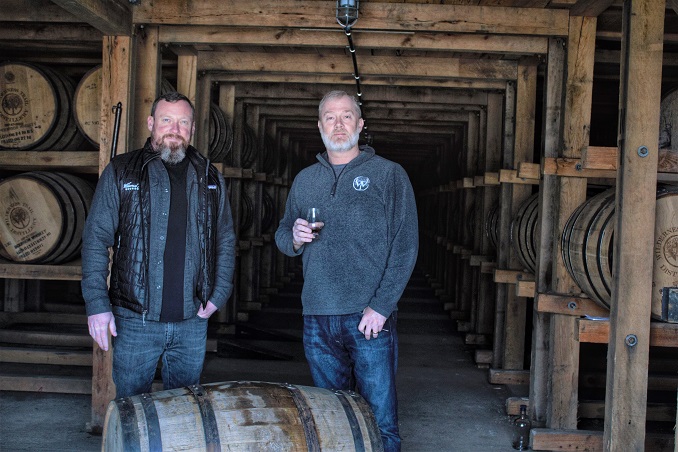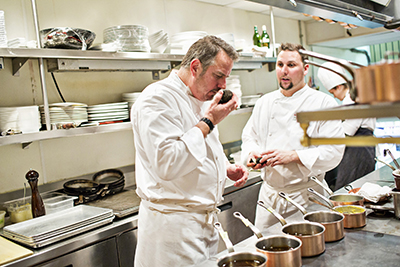At the opening session, a lively panel of keynote speakers moderated by Kim Severson from The New York Times talked about the parallels between food and fashion and implications for the future.
Marcus Samuelsson, Chef and Owner of Red Rooster in New York’s Harlem neighborhood, was introduced as a cultural curator. He was quick to note that curation is not about exclusivity that offers access to only a few but rather the grand democratization of both the food and fashion industries which are becoming more inclusive because of the immediacy with which information is shared.
Bringing the Conversation Home
The United States was discussed as the trendiest place on earth where trends are set and merged with world cultures and cuisines. There was no place to have this conversation better than in New York where world cultures collide and emerge in a great melting pot. Pre-conference tours were quickly sold out this year because of the variety and diversity of experiences that are uniquely available in the city.
There is always much conversation about food activism at this conference. Talk of Tuscany and Milan was abundant and always interesting. However, noted chefs were talking about the more exciting nature of making a difference in places like Harlem where things can be fixed or exploring a city like Memphis with a culinary culture yet to fully define itself. On the map, but off the beaten path; is where the trends are emerging.
The Reconstruction of Authenticity
The fusion of ethnic cuisines worldwide is so much a fact of life it’s barely worth a mention. London and New York were discussed as unique densely populated urban environments that are seeing a return to authenticity. Indian food in London, for example, began as authentic food from home that appealed mostly to immigrants. Evolution and the incorporation of local ingredients and cooking styles made it more appealing to a broader audience. Now, micro-cuisines of India are all the rage coming full circle. A tour with Madhur Jeffries explored all the “little India’s” of New York. Look for authentic ethnic to emerge in all categories.
Eating Local: Fashion or Fad
Much of the discussion during this conference explored the evolution of eating local and where the future of food is going. As consumers become more and more educated on where and how they get their food, the demand for local is becoming more of a way of life. As Dan Baber so eloquently states “local is forever, and we are going to continue to move toward a more localized food system,” he went on to say, “a delicious future.”
Speakeasy Code
Knock four times, dial one, state your reason for being; these are just a few of the quirky secrets for entering the “nonexistent, extremely exclusive” speakeasies around New York City. Known for innovative cocktail creations and secrecy, you are immediately transported to the days of prohibition. Soft conversation and cocktails made with bitters, a myriad of herbs, and fancy infused syrups make the three to five hour wait that much more special.
Emerging Food Fashion
Nordic cuisine and the act of foraging stole the spotlight as the emerging trend for 2012; however, at the conference this year there was a lot of buzz around the Eastern Mediterranean. Known much for kabobs, and a very veggie-centric foods. In fact, most cooking that takes place in the home consists mainly of vegetable dishes. Popular vegetables include: tomatoes, potatoes, and onions. However, eggplant is king and most chefs know how to prepare it 50+ ways.
The Evolution of Food Photography
Photography in general has come a long way over the years. From film to digital and on-screen retouching, today’s photographers and food stylist have just about everything they need at the swipe of their finger. Styling has gone from indigestible in the 50’s to inedible in the 70’s, and has slowly moved toward focusing on the food at hand. Now, photos are more focused on the food and realness of the product or recipe. Trending now: food as an object, food is moody, and a rustic/earthy approach gives food origin.
The Buzz
This is a conference like no other to catch sound bites from some the food industry’s leading voices. Here is a sampling of the buzz:
- How do consumers tap into the trends? Consumers want a credible source to clear the clutter for them and tell them what’s important to try, watch or turn down. Gilt Taste (http://www.gilttaste.com/) is one of the places consumers look to as a trusted source.
- What’s today’s comfort food? The evolution of comfort food has a context in time: in the 1950’s it was roasted chicken; pasta in the 1980’s, sushi in the 1990’s and tacos are considered to be the comfort food of the 2000’s.
- What do the purists say about indulgence? There is a difference between yummy and junk food. There is nothing wrong with a little indulgence, but there is no point in eating junk.
- The new craft cocktail is brown, bitter and bold with the return to elegance or the appeal of the speakeasy. Vodka is stepping aside as the blank canvas for trendy cocktails. But some vodkas are reinventing themselves with terroir, varietals and significant differences among vintages.
- Cutback cuisine favors carnivores. Vegetarians were quick to note that restaurants are cutting back the number of menu items they serve to capture the new economy, and they are often cutting vegetarian menu items in favor of carnivorous favorites. The greater range of cuts available is allowing chefs to offer satisfaction at lower price points.
- What makes Italian food popular? It’s good, simple food that is treated with respect – it’s a recipe for success with any cuisine.
- Interesting and unsettling fact – there is a seed vault buried deep beneath the polar ice cap in Norway that houses half a million seeds in case of global disaster. The implications are obviously unsettling.
- Urban gardens are captivating city dwellers driven by chefs and foodies who think a rooftop is too good to waste. They are cultivating more and more urban gardens.
From the Show Floor
- Pink Muscatel Grapes – A flavor explosion worth seeking. Pink Muscatels have a short season – one month – but the citrus-sweet combination is out of this world.
- Infusions – Infusing interesting flavors into classic items has given foods like cheese and olive oil a unique point of difference. Noted on the show floor were whiskey infused cheeses and curry infused olive oil.
- Slow cooked, braised, ground, and jerky; lamb had a strong presence on the show floor and throughout the conference.
- Clever chutney, sumptuous spreads, and experimental jams excited attendees and had taste buds rejoicing with every taste.
- Canola Oil – Touting its low profile high impact benefits, attendees were educated about the oil and various cooking methods.
Taste Talk Tweet
Twitter captured messages from the conference about local food systems, finding inspiration through street food and street fashion, healthy eating and sustainability. In addition, a flurry of tweets about chefs moving toward whole animal preparation and offal flooded the feed; tweets regarding over indulgence, vegetarians, and creating value for all consumers were expressed.
If you want to follow our observations in real time go to http://twitter.com/OlsonComm. The next conference we will cover is the National Restaurant Association Show May 5-8, 2012
Implications:
- Concepts that merge foodservice, retail and hospitality like New York’s Eataly may be the new model that captivates today’s consumer.
- The Myth of Authenticity – consumers want authentic flavor foods but often made with higher quality and more healthful ingredients than the heritage foods upon which they are modeled.
- Bitter is getting the flavor buzz from cocktails to desserts; a flavor more often favored by foodies than mainstream consumers is captivating consumers.
- Local Captures – As local becomes more of the norm, building relationships with the farmers is becoming an important source to opinion leading chefs and restaurateurs.
Since 1988 Olson Communications has specialized in offering personalized, uniquely crafted marketing communication strategies for food business clients based in the United States and abroad. The agency’s business strategy of remaining small while exceeding the range and depth of service typical of larger food marketing agencies has earned Olson Communications international recognition.







